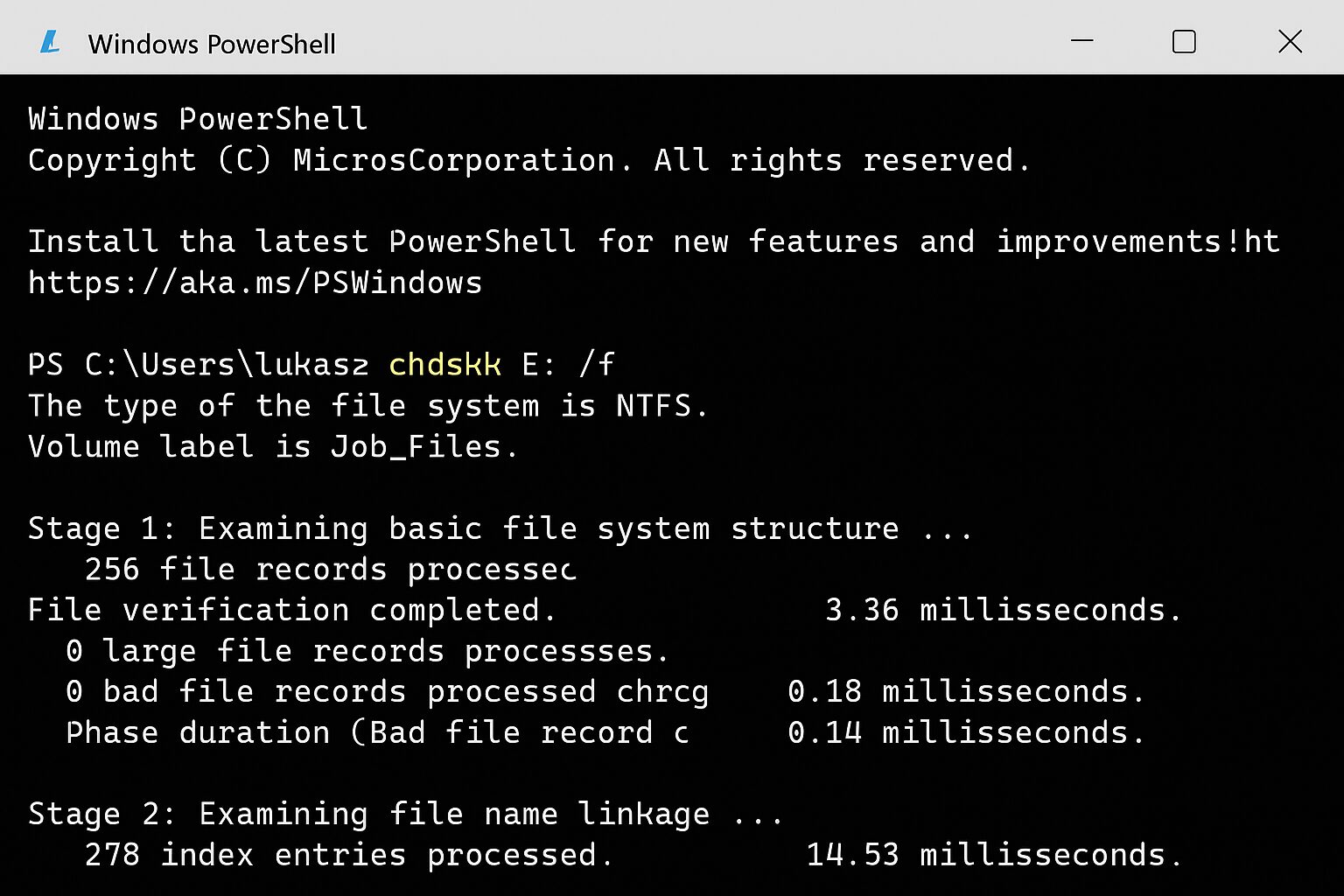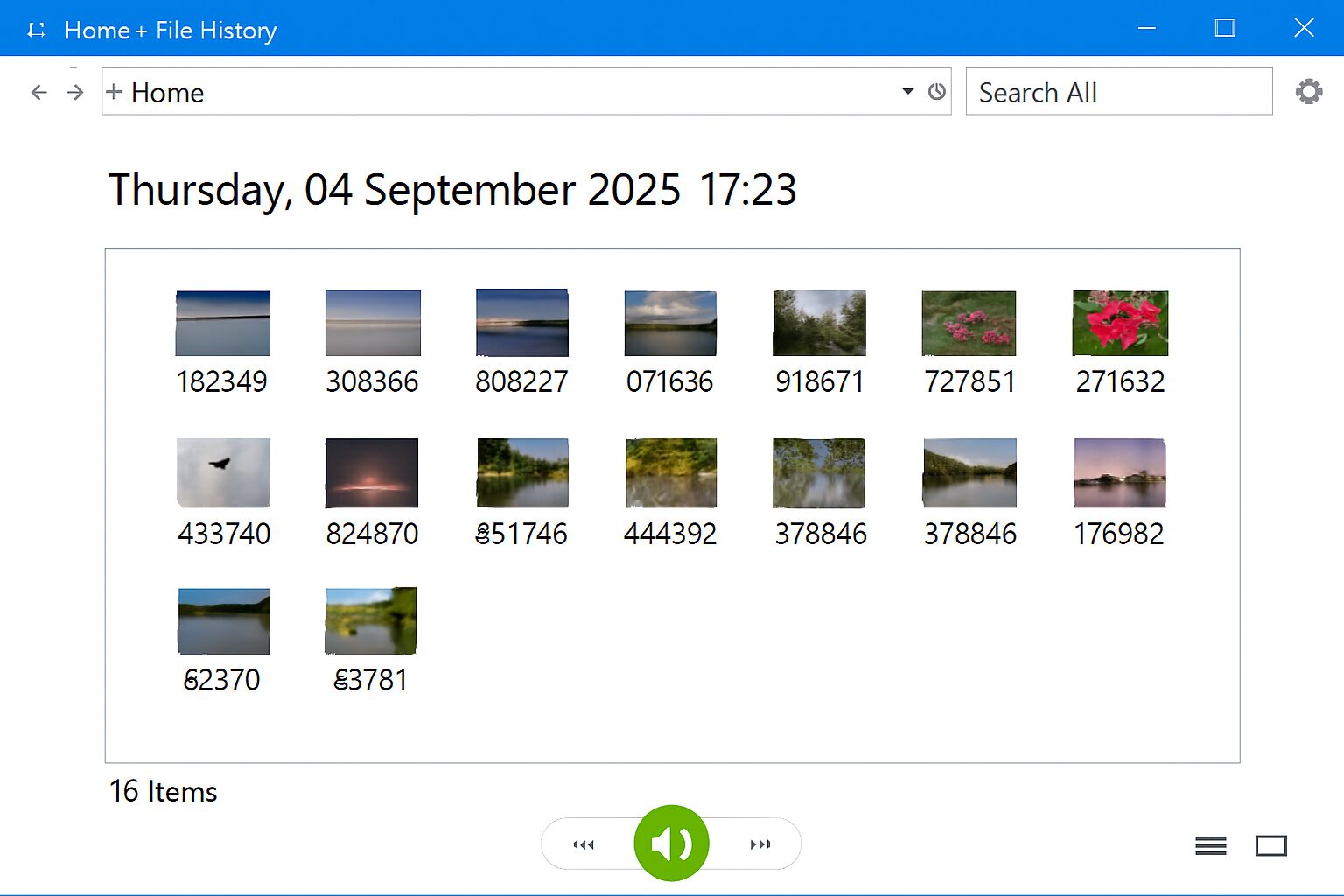USB Flash Data Recovery Software: Recover Deleted Files from Flash Drive
USB flash drives are widely used for their portability and efficiency, but accidental deletion, formatting, or damage can often leave you stranded. Today, we introduce a powerful usb flash data recovery software solution that helps you effortlessly retrieve lost files and offers comprehensive tips for prevention and backups.
Meet XRecovery: Fast, Reliable, and Easy-to-Use USB Recovery
Common Causes of Data Loss in Flash Drive
Data loss on a Flash Drive is a common challenge users face, and they’re not always aware of what causes it. Pinpointing the root cause is the essential first step in selecting the most effective recovery approach.
Accidental Deletion
One of the most frequent causes of data loss on USB flash drives is accidental file deletion. Users may mistakenly remove important files or only realize their value after they’ve already been deleted.
 Formatting Error
Formatting Error
Formatting a USB flash drive may seem routine, but a simple mistake—like choosing the wrong drive or file system—can lead to unexpected data loss.
Hardware Damage
USB drives are small and delicate, making them prone to physical damage. Fortunately, if the damage is minor, they can often be repaired and the lost data successfully recovered.
Power Loss
A sudden loss of power may prevent important data transfer processes from finishing correctly and leave you with some data missing.
Improper Ejection
Improper removal of a USB drive can interrupt read/write processes and often leads to flash drive corruption, which may require specialized tools to recover data.
Software Crashes and Bugs
Most software applications inevitably contain bugs, and certain ones can trigger crashes that result in unexpected data loss.
How to Recover Files From a USB Flash Drive With a USB Recovery Tool
Follow the steps below to recover files from a USB drive with XRecovery
1. Download and Install XRecovery USB Data Recovery Software
Begin by downloading the free version of XRecovery. Run the setup file as an administrator and follow the installation steps. With XRecovery for Windows, you can recover up to 1000 MB of data from any USB flash drive at no cost. You’ll also be able to preview an unlimited number of files to assess their recoverability—before upgrading to the Pro version for unlimited recovery.
2. Plug Your USB Flash Drive into Your Computer
Once you’ve successfully installed XRecovery, connect your USB flash drive to your computer. Wait for the familiar notification sound to confirm that the device has been recognized and mounted. You can verify this by checking if the drive appears in File Explorer—or, if not, by opening the Device Management tool (press Win + X). As long as your USB flash drive is properly detected there, XRecovery will be able to scan it for recoverable data
3. Launch XRecovery and Scan Your USB Flash Drive
You’re now ready to launch XRecovery. Within seconds, it will scan and list all connected storage devices in the main interface. Select your USB flash drive and click the “Search for Lost Data” button to begin the recovery process. XRecovery will automatically apply the most effective recovery methods to retrieve as many files as possible. Simply wait for the scan to complete—your data is on its way back.
4. Preview and Select Recoverable Files
After the scan, XRecovery will display all recoverable files grouped into three categories: Deleted or Lost, Existing, and Reconstructed. You can preview any file and use the filters on the left panel to narrow down your results. Once you’ve found the files you want to recover, simply check the box next to each one to add them to your recovery queue.
5. Click the Recover Button to Restore Selected Files
To recover your selected files, click the “Recover” button located below the file list and choose a recovery destination. Be sure to select a location on a different drive than the USB flash drive you’re recovering from—this helps prevent overwriting and ensures a safer recovery process.
What Sets XRecovery Apart
Ultra-Fast Deep Scan
recover files in a short time
Zero Data Exposure
local processing, no uploads
Smart File Signature
finds even fragmented files
The Science Behind XRecovery’s Deep Scan
Data recovery begins with a low-level examination of every sector on your USB flash drive, searching for known file signatures—unique headers and footers that mark the start and end of each file. XRecovery’s deep scan goes beyond quick directory checks by traversing raw data blocks, reconstructing fragmented files, and rebuilding damaged file tables. This exhaustive approach is crucial when standard scans miss data erased by formatting, corruption, or overwrites. Backed by years of proprietary research and multi-stage algorithms, XRecovery’s deep scanning engine delivers the highest recovery rates while minimizing false positives.
What File Types Can XRecovery Retrieve from Your USB Drive?
USB drives are commonly used to store a wide variety of file formats—from documents and compressed archives to photos, videos, and audio files. That’s why XRecovery is designed to handle over 400 file types, ensuring broad compatibility and reliable recovery across nearly every format users are likely to encounter.
ビデオ
M4V (iTunes video), MP4 (MPEG-4 video), AVI, FLV (Flash video), WMV (Windows Media Video), MPG (MPEG video)
オーディオ
MP3 (MPEG Audio Stream, Layer III), AIFF (Audio Interchange File), AIF, AIFC, WMA (Windows Media audio files)
Images
JP2, GIF, TIFF, BMP, JPEG, PSP. Polaroid/Sigma: X3F. Pentax: PEF. Adobe: AI, IDML, INDB, INDD, PSB, INDL, APM, INX, LRCAT, PSD.
Documents
DOCX (Microsoft Word), PPTX (Microsoft PowerPoint), PDF (Portable Document Format), XLSX (Microsoft Excel Spreadsheet)
Archives
DMG (Mac OS X Disk Image), RAR (WinRAR Compressed Archive), 7Z (7-Zip Compressed), CAB (Windows Cabinet File), ZIP (Extended Zip File)
その他のファイル
ACCDB (Microsoft Database), OTF (OpenType Font), SQL (bundled SQL queries), DB (Paradox), MYO (MYOB Limited Windows File)
Recover Deleted Files from flash Drive Without Software
If you’d rather avoid installing dedicated recovery software, there are alternative ways to retrieve deleted files from a flash drive—such as using built-in system tools or previous backup versions—though they may offer limited success compared to specialized solutions like XRecovery.

Restore Deleted Files from a USB Drive Using CMD
If you’re comfortable using the Windows Command Prompt, it’s possible to recover deleted files from a USB flash drive using just a few built-in commands. This approach works best when dealing with corrupted drives or hidden files, but it has limitations—especially when it comes to retrieving permanently deleted data. For more advanced recovery capabilities, specialized tools like XRecovery offer a deeper scan and higher success rates.
- Plug the USB drive into your computer.
- Launch the Windows command prompt by typing “cmd” in the search box.
- Enter the following command to verify and fix the integrity of the USB drive:
chkdsk X: /f - Enter the following command to recover hidden files:
ATTRIB -H -R -S /S /D X:*.* - Exit Command Prompt and open your USB drive in File Explorer.
SOLUTION 2
Use Windows File History
Backups created by the Windows operating system can be accessed through the File History tool. However, its effectiveness depends entirely on whether the files were backed up prior to deletion or loss. If no backup exists, File History won’t be able to recover the missing data. By default, it automatically backs up folders like Desktop, Documents, Downloads, Music, Pictures, and Videos. So if your flash drive files were ever copied or moved into one of these folders—even temporarily—there’s a chance they may be recoverable
Follow these steps to recover deleted files from flash drive using File History:
- Connect the USB flash drive to your PC.
- In the taskbar’s search box, type Restore your files using File History.
- Ensure that the File History option is turned on.
- Look for the files you want to recover.
- Select Restore to recover the files to their original location, or select Restore to if you want to save them to a different folder.

Use a Recovery Service to Repair a Damaged or Unresponsive USB Flash Drive
Recovering data from a physically damaged USB flash drive is a complex task that often requires specialized equipment and advanced technical expertise. Attempting to retrieve the data on your own can easily worsen the damage and reduce the chances of successful recovery. In such cases, it’s strongly recommended to seek help from a professional data recovery service—our guide 近隣で信頼できるデータ復旧サービスを探す can help you locate trusted experts in your area
XRecovery vs. Other USB Recovery Tools
Searching for the best USB flash drive recovery software? Our in-depth comparison makes it easy to evaluate top-rated solutions side by side—helping you choose the right tool with confidence and clarity.
Xリカバリー  | Disk Drill | Data Recovery Wizard | Recuva  | Recoverit | |
Rating | 4.5/5 | 4/5 | 4/5 | 3/5 | 4/5 |
Free Version | 1G Free&100M every day(full features) | total 500M Free(full features) | total 1G(limited features) | low success rate | total 200M(limited features) |
Corrupted SD card recovery | ✔
| ✔
| ✔
| ❌
| ✔
|
Formatted SD card recovery | ✔
| ✔
| ✔
| ✔
| ✔
|
RAW SD card recovery | ✔
| ✔
| ✔
| ✔
| ✔
|
RAW photo recovery | ✔
| Partial support | Partial support | Limited support | Partial support |
Video file recovery(Mp4,Mov etc) | ✔
| no enhancement algorithm | ✔
| no enhancement algorithm | ✔
|
Modern user-friendly Interface | 4.5/5 | 4/5 | 4.5/5 | 3/5 | 4.5/5 |
preview of photo / video files | ✔
| Limited support | Free not support | Limited support | Free not support |
Upgrade Price | 25$ | 89$ | 69$ | 24.95$ | 59.9$ |
How to Avoid USB Flash Drive Data Loss
Taking a few smart precautions can help you prevent USB flash drive data loss—and spare yourself the frustration and downtime that often come with it.
Back up your data
Backups remain the most reliable safeguard against USB flash drive data loss. Whenever possible, make it a habit to back up your flash drive daily to a separate storage device—and periodically verify that those backups are actually recoverable. For added convenience and protection, consider enabling automatic cloud backup to ensure your data stays safe even if your hardware fails.
Be careful when formatting
Formatting is one of the riskiest operations when working with a USB flash drive, so it’s crucial to proceed with caution. Always double-check that you’ve selected the correct drive before erasing its contents—one wrong click could mean permanent data loss.
Update your computer
Outdated software with unresolved bugs is far more likely to crash at the worst possible moment—like during a file transfer to your USB flash drive—putting your data at serious risk. To minimize the chances of unexpected failure, always keep your system tools up to date, including your recovery software. That means keeping Xリカバリー updated as well, so it’s ready when you need it most.
Protect it from physical damage
USB flash drives are delicate devices that can be easily damaged if not handled properly. Although data recovery from a physically compromised flash drive is sometimes possible, it typically requires specialized tools and expert intervention to avoid further loss.
Frequently Asked Questions
Updated on 10月 15, 2025 By XRecovery Team
What to do if your USB flash drive isn’t recognized?
Try uninstalling and reinstalling the USB driver via Device Manager, or switch to a different port or cable to rule out connection issues.
Can data be recovered from physical damage?
For minor issues, you can first try scanning the drive with recovery software. If the device isn’t recognized or the recovery fails, it’s best to send it to a professional data recovery lab.
Are there ways to recover files without installing software?
Using Windows CMD commands like chkdsk and attrib, you can restore hidden or corrupted files—but they won’t help recover files that have been permanently deleted.
How can I recover deleted files from a flash drive?
To recover deleted files from a USB flash drive, follow these steps using Xリカバリー:
Download and install XRecovery for Windows
Connect your flash drive to the computer and ensure it’s properly detected.
Launch XRecovery and select your USB drive from the list of available storage devices.
Click “Search for lost data” to begin scanning for deleted files.
Preview and select the files you want to recover.
Click “Recover” and choose a safe location—preferably on a different drive—to save the restored files.
This process is designed to be straightforward, even for non-technical users, while offering powerful recovery capabilities under the hood. Let me know if you’d like a visual guide or a comparison with other tools.
What is the best flash drive recovery software?
During our testing, we evaluated a range of USB flash drives under various data loss scenarios to assess the performance of leading recovery tools. Here’s our top selection:
Xリカバリー – delivered the most consistent recovery results, especially for formatted or corrupted USB drives.
Disk Drill– a free, open-source command-line utility that excels at recovering multiple file types across platforms.
DiskGenius – a free Windows-based tool ideal for straightforward recovery tasks, with built-in disk management features.
R-Studio – offers advanced recovery controls and forensic-level precision for complex data loss cases.
UFS Explorer – tailored for power users, with extensive configuration options and support for diverse file systems
How do I recover files from a corrupted USB flash drive?
Use Xリカバリー to safely recover files from corrupted USB flash drives. Before scanning, the software can create a backup image of the drive—giving you a secure copy to work from and minimizing the risk of further data loss.

XRecovery 3.0
Flash Data Recovery and Data Protection

